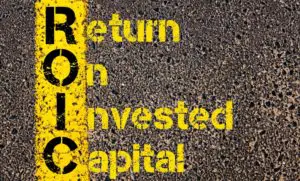November 5, 2023
Michael Mauboussin is the author of several excellent books, including More Than You Know and Think Twice. I wrote about these books here:
- More Than You Know: https://boolefund.com/more-than-you-know-2/
- Think Twice: https://boolefund.com/think-twice/
He has also written numerous papers, including Thirty Years: Reflections on the Ten Attributes of Great Investors: https://bit.ly/2zlaljc
When it comes to value investing, Mauboussin is one of the best writers in the world. Mauboussin highlights market efficiency, competitive strategy analysis, valuation, and decision making as chief areas of focus for him the past couple of decades. Mauboussin:
What we know about each of these areas today is substantially greater than what we did in 1986, and yet we have an enormous amount to learn. As I like to tell my students, this is an exciting time to be an investor because much of what we teach in business schools is a work-in-progress.
(Image by magele-picture)
Here are the Ten Attributes of Great Investors:
- Be numerate (and understand accounting).
- Understand value (the present value of free cash flow).
- Properly assess strategy (or how a business makes money).
- Compare effectively (expectations versus fundamentals).
- Think probabilistically (there are few sure things).
- Update your views effectively (beliefs are hypotheses to be tested, not treasures to be protected).
- Beware of behavioral biases (minimizing constraints to good thinking).
- Know the difference between information and influence.
- Position sizing (maximizing the payoff from edge).
- Read (and keep an open mind).
BE NUMERATE (AND UNDERSTAND ACCOUNTING)
Mauboussin notes that there are two goals when analyzing a company’s financial statements:
- Translate the financial statements into free cash flow.
- Determine how the competitive strategy of the company creates value.
The value of any business is the future free cash flow it will produce discounted back to the present.
(Photo by designer491)
Free cash flow is cash earnings minus investments that must be made to grow future earnings. Free cash flow represents what owners of the business receive. Warren Buffett refers to free cash flow as owner earnings.
Earnings alone cannot give you the value of a company. You can grow earnings without growing value. Whether earnings growth creates value depends on how much money the company invests to generate that growth. If the ROIC (return on invested capital) of the company’s investment is below the cost of capital, then the resulting earnings growth destroys value rather than creates it.
After calculating free cash flow, the next goal in financial statement analysis is to figure out how the company’s strategy creates value. For the company to create value, the ROIC must exceed the cost of capital. Analyzing the company’s strategy means determining precisely how the company can get ROIC above the cost of capital.
Mauboussin writes that one way to analyze strategy is to compare two companies in the same business. If you look at how the companies spend money, you can start to understand competitive positions.
Another way to grasp competitive position is by analyzing ROIC.

You can break ROIC into two parts:
- profitability (net operating profit after tax / sales)
- capital velocity (sales / invested capital)
Companies with high profitability but low capital velocity are using a differentiation strategy. Their product is positioned in such a way that the business can earn high profit margins. (For instance, a luxury jeweler.)
Companies with high capital velocity but low profitability have adopted a cost leadership strategy. These businesses may have very thin profit margins, but they still generate high ROIC because their capital velocity is so high. (Wal-Mart is a good example.)
Understanding how the company makes money can lead to insight about how long the company can maintain a high ROIC (if ROIC is high) or what the company must do to improve (if ROIC is low).
UNDERSTAND VALUE (THE PRESENT VALUE OF FREE CASH FLOW)
Mauboussin:
Great fundamental investors focus on understanding the magnitude and sustainability of free cash flow. Factors that an investor must consider include where the industry is in its life cycle, a company’s competitive position within its industry, barriers to entry, the economics of the business, and management’s skill at allocating capital.
It’s worth repeating: The value of any business (or any financial asset) is the future free cash flow it will produce discounted back to the present. Successful investors understand the variables that impact free cash flow.

PROPERLY ASSESS STRATEGY (OR HOW A COMPANY MAKES MONEY)
Mauboussin says this attribute has two elements:
- How does the company make money?
- Does the company have a sustainable competitive advantage, and if so, how durable is it?
To see how a business makes money, you have to figure out the basic unit of analysis. Mauboussin points out that the basic unit of analysis for a retailer is store economics: How much does it cost to build a store? What revenues will it generate? What are the profit margins?
Regarding sustainable competitive advantage, Warren Buffett famously said:
The key to investing is not assessing how much an industry is going to affect society, or how much it will grow, but rather determining the competitive advantage of any given company and, above all, the durability of that advantage.
If a company has a sustainable competitive advantage, then ROIC (return on invested capital) is above the cost of capital. To assess the durability of that advantage, you have to analyze the industry and how the company fits in. Looking at the five forces that determine industry attractiveness is a common step. You should also examine potential threats from disruptive innovation.
Mauboussin:
Great investors can appreciate what differentiates a company that allows it to build an economic moat around its franchise that protects the business from competitors. The size and longevity of the moat are significant inputs into any thoughtful valuation.

Buffett popularized the term economic moat to refer to a sustainable competitive advantage. Here’s what Buffett said at the Berkshire annual meeting in 2000:
So we think in terms of that moat and the ability to keep its width and its impossibility of being crossed as the primary criterion of a great business. And we tell our managers we want the moat widened every year. That doesn’t necessarily mean the profit will be more this year than it was last year because it won’t be sometimes. However, if the moat is widened every year, the business will do very well.
COMPARE EFFECTIVELY (EXPECTATIONS VERSUS FUNDAMENTALS)
Mauboussin:
Perhaps the most important comparison an investor must make, and one that distinguishes average from great investors, is between fundamentals and expectations. Fundamentals capture a sense of a company’s future financial performance. Value drivers including sales growth, operating profit margins, investment needs, and return on investment shape fundamentals. Expectations reflect the financial performance implied by the stock price.
Mauboussin mentions pari-mutuel betting, specifically horse racing.
(Photo by Elshaneo)
Fundamentals are how fast the horse will run, while expectations are the odds.
- If a company has good fundamentals, but the stock price already reflects that, then you can’t expect to beat the market by investing in the stock.
- If a company has bad fundamentals, but the stock price is overly pessimistic, then you can expect to beat the market by investing in the stock.
The best business in the world will not bring excess returns if the stock price already fully reflects the high quality of the business. Similarly, a terrible business can produce excess returns if the stock price indicates that investors have overreacted.
To make money by investing in a stock, you have to have what great investor Michael Steinhardt calls a variant perception“”a view at odds with the consensus view (as reflected in the stock price). And you have to be right.
Mauboussin observes that humans are quick to compare but aren’t good at it. This includes reasoning by analogy, e.g., asking whether a particular turnaround is similar to some other turnaround. However, it’s usually better to figure out the base rate: What percentage of all turnarounds succeed? (Not a very high number, which is why Buffett quipped, “Turnarounds seldom turn.”)
Another limitation of humans making comparisons is that people tend to see similarities when they’re looking for similarities, but they tend to see differences when they’re looking for differences. For instance, Amos Tversky did an experiment in which the subjects were asked which countries are more similar, West Germany and East Germany, or Nepal and Ceylon? Two-thirds answered West Germany and East Germany. But then the subjects were asked which countries seemed more different. Logic says that they would answer Nepal and Ceylon, but instead subjects again answered West Germany and East Germany.
THINK PROBABILISTICALLY (THERE ARE FEW SURE THINGS)
Great investors are always seeking an edge, where the price of an asset misrepresents the probabilities or the outcomes. By similar logic, great investors evaluate each investment decision based on the process used rather than based on the outcome.
- A good investment decision is one that if repeatedly made would be profitable over time.
- A bad investment decision is one that if repeatedly made would lead to losses over time.
However, a good decision will sometimes lead to a bad outcome, while a bad decision will sometimes lead to a good outcome. Investing is similar to other forms of betting in that way.

Furthermore, what matters is not how often an investor is right, but rather how much the investor makes when he is right versus how much he loses when he is wrong. In other words, what matters is not batting average but slugging percentage. This is hard to put into practice due to loss aversion“”the fact that as humans we feel a loss at least twice as much as an equivalent gain.
There are three ways of determining probabilities. Subjective probability is a number that corresponds with your state of knowledge or belief. Mauboussin gives an example: You might come up with a probability that two countries will go to war. Propensity is usually based on the physical properties of the system. If a six-sided die is a perfect cube, then you know that the odds of a particular side coming up must be one out of six. Frequency is the third approach. Frequency””also called the base rate“”is measured by looking at the outcomes of a proper reference class. How often will a fair coin land on heads? If you gather all the records you can of a fair coin being tossed, you’ll find that it lands on heads 50 percent of the time. (You could run your own trials, too, by tossing a fair coin thousands or millions of times.)
Often subjective probabilities are useful as long as you remain open to new information and properly adjust your probabilities based on that information. (The proper way to update such beliefs is using Bayes’s theorem.) Subjective probabilities are useful when there’s no clear reference class””no relevant base rate.
When you’re looking at corporate performance””like sales or profit growth””it’s usually best to look at frequencies, i.e., base rates.
An investment decision doesn’t have to be complicated. In fact, most good investment decisions are simple. Mauboussin quotes Warren Buffett:
Take the probability of loss times the amount of possible loss from the probability of gain times the amount of possible gain. That is what we’re trying to do. It’s imperfect, but that’s what it’s all about.
Buffett again:
Investing is simple, but not easy.
UPDATE YOUR VIEWS EFFECTIVELY (BELIEFS ARE HYPOTHESES TO BE TESTED, NOT TREASURES TO BE PROTECTED)
We have a strong preference for consistency when it comes to our own beliefs. And we expect others to be consistent. The problem is compounded by confirmation bias, the tendency to look for and see only information that confirms our beliefs, and the tendency to interpret ambiguous information in a way that supports our beliefs. As long as we feel like our beliefs are both consistent and correct””and, as a default psychological setting, most of us feel this way most of the time””we’ll feel comfortable and we won’t challenge our beliefs.

Great investors seek data and arguments that challenge their views. Great investors also update their beliefs when they come across evidence that suggests they should. The proper way to update beliefs is using Bayes’s theorem. To see Bayes’s theorem and also a clear explanation and example, see: https://boolefund.com/the-signal-and-the-noise/
Mauboussin:
The best investors among us recognize that the world changes constantly and that all of the views that we hold are tenuous. They actively seek varied points of view and update their beliefs as new information dictates. The consequence of updated views can be action: changing a portfolio stance or weightings within a portfolio. Others, including your clients, may view this mental flexibility as unsettling. But good thinking requires maintaining as accurate a view of the world as possible.
BEWARE OF BEHAVIORAL BIASES (MINIMIZING CONSTRAINTS TO GOOD THINKING)
Mauboussin:
Keith Stanovich, a professor of psychology, likes to distinguish between intelligence quotient (IQ), which measures mental skills that are real and helpful in cognitive tasks, and rationality quotient (RQ), the ability to make good decisions. His claim is that the overlap between these abilities is much lower than most people think. Importantly, you can cultivate your RQ.
Rationality is only partly genetic. You can train yourself to be more rational.
Great investors relentlessly train themselves to be as rational as possible. Typically they keep an investment journal in which they write down the reasoning for every investment decision. Later they look back on their decisions to analyze what they got right and where they went wrong.
Great investors also undertake a comprehensive study of cognitive biases. For a list of cognitive biases, see these two blog posts:
- Cognitive Biases: https://boolefund.com/cognitive-biases/
- The Psychology of Misjudgment: https://boolefund.com/the-psychology-of-misjudgment/
It’s rarely enough just to know about cognitive biases. Great investors take steps””like using a checklist””designed to mitigate the impact that innate cognitive biases have on investment decision-making.

KNOW THE DIFFERENCE BETWEEN INFORMATION AND INFLUENCE
A stock price generally represents the collective wisdom of investors about how a given company will perform in the future. Most of the time, the crowd is more accurate than virtually any individual investor.
(Illustration by Marrishuanna)
However, periodically a stock price can get irrational. (If this weren’t the case, great value investors could not exist.) People regularly get carried away with some idea. For instance, as Mauboussin notes, many investors got rich on paper by investing in dot-com stocks in the late 1990’s. Investors who didn’t own dot-com stocks felt compelled to jump on board when they saw their neighbor getting rich (on paper).
Mauboussin mentions the threshold model from Mark Granovetter, a professor of sociology at Stanford University. Mauboussin:
Imagine 100 potential rioters milling around in a public square. Each individual has a “riot threshold,” the number of rioters that person would have to see in order to join the riot. Say one person has a threshold of 0 (the instigator), one has a threshold of 1, one has a threshold of 2, and so on up to 99. This uniform distribution of thresholds creates a domino effect and ensures that a riot will happen. The instigator breaks a window with a rock, person one joins in, and then each individual piles on once the size of the riot reaches his or her threshold. Substitute “buy dotcom stocks” for “join the riot” and you get the idea.
The point is that very few of the individuals, save the instigator, think that rioting is a good idea. Most would probably shun rioting. But once the number of others rioting reaches a threshold, they will jump in. This is how the informational value of stocks is set aside and the influential component takes over.
Great investors are not influenced much at all by the behavior of other investors. Great investors know that the collective wisdom reflected in a stock price is usually right, but sometimes wrong. These investors can identify the occasional mispricing and then make an investment while ignoring the crowd.
POSITION SIZING (MAXIMIZING THE PAYOFF FROM EDGE)
Great investors patiently wait for situations where they have an edge, i.e., where the odds are in their favor. Many investors understand the need for an edge. However, fewer investors pay much attention to position sizing.
If you know the odds, there’s a formula””the Kelly criterion””that tells you exactly how much to bet in order to maximize your long-term returns. The Kelly criterion can be written as follows:
- F = p ““ [q/o]
where
- F = Kelly criterion fraction of current capital to bet
- o = Net odds, or dollars won per $1 bet if the bet wins (e.g., the bet may pay 5 to 1, meaning you win $5 per each $1 bet if the bet wins)
- p = probability of winning
- q = probability of losing = 1 ““ p
The Kelly criterion has a unique mathematical property: if you know the probability of winning and the net odds (payoff), then betting exactly the percentage determined by the Kelly criterion leads to the maximum long-term compounding of capital. (This assumes that you’re going to make a long series of bets.) Betting any percentage that is not equal to that given by the Kelly criterion will inevitably lead to lower compound growth over a long period of time.
Mauboussin adds:
Proper portfolio construction requires specifying a goal (maximize sum for one period or parlayed bets), identifying an opportunity set (lots of small edge or lumpy but large edge), and considering constraints (liquidity, drawdowns, leverage). Answers to these questions suggest an appropriate policy regarding position sizing and portfolio construction.
In brief, most investors are ineffective at position sizing, but great investors are good at it.
READ (AND KEEP AN OPEN MIND)
Great investors generally read a ton. They also read widely across many disciplines. Moreover, as noted earlier, great investors seek to learn about the arguments of people who disagree with them. Mauboussin:
Berkshire Hathaway’s Charlie Munger said that he really liked Albert Einstein’s point that “success comes from curiosity, concentration, perseverance and self-criticism. And by self-criticism, he meant the ability to change his mind so that he destroyed his own best-loved ideas.” Reading is an activity that tends to foster all of those qualities.
(Photo by Lapandr)
Mauboussin continues:
Munger has also said, “In my whole life, I have known no wise people (over a broad subject matter area) who didn’t read all the time””none, zero.” This may be hyperbolic, but seems to be true in the investment world as well.
BOOLE MICROCAP FUND
An equal weighted group of micro caps generally far outperforms an equal weighted (or cap-weighted) group of larger stocks over time. See the historical chart here: https://boolefund.com/best-performers-microcap-stocks/
This outperformance increases significantly by focusing on cheap micro caps. Performance can be further boosted by isolating cheap microcap companies that show improving fundamentals. We rank microcap stocks based on these and similar criteria.
There are roughly 10-20 positions in the portfolio. The size of each position is determined by its rank. Typically the largest position is 15-20% (at cost), while the average position is 8-10% (at cost). Positions are held for 3 to 5 years unless a stock approaches intrinsic value sooner or an error has been discovered.
The mission of the Boole Fund is to outperform the S&P 500 Index by at least 5% per year (net of fees) over 5-year periods. We also aim to outpace the Russell Microcap Index by at least 2% per year (net). The Boole Fund has low fees.
If you are interested in finding out more, please e-mail me or leave a comment.
My e-mail: jb@boolefund.com
Disclosures: Past performance is not a guarantee or a reliable indicator of future results. All investments contain risk and may lose value. This material is distributed for informational purposes only. Forecasts, estimates, and certain information contained herein should not be considered as investment advice or a recommendation of any particular security, strategy or investment product. Information contained herein has been obtained from sources believed to be reliable, but not guaranteed. No part of this article may be reproduced in any form, or referred to in any other publication, without express written permission of Boole Capital, LLC.






